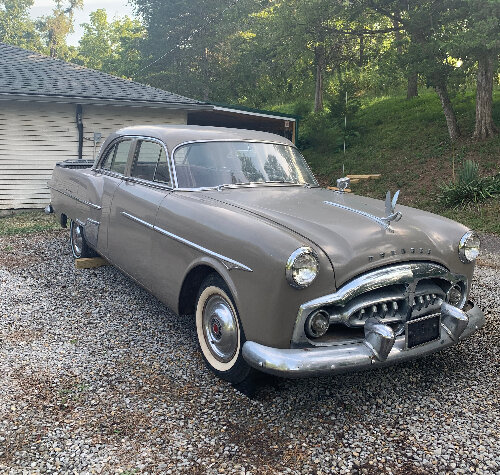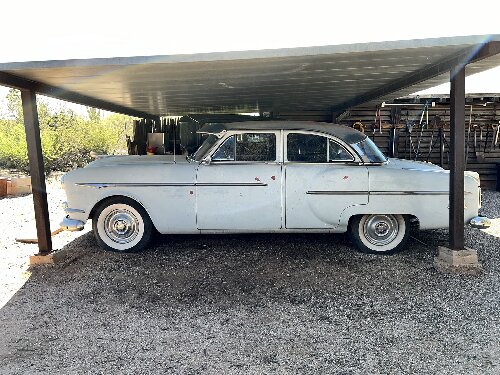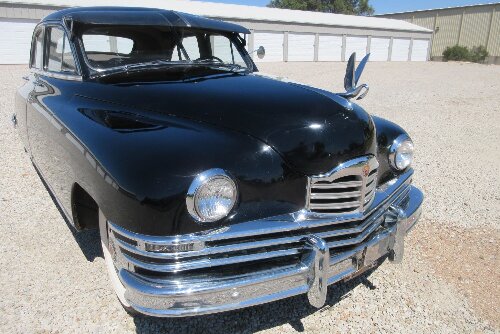|
Re: Torsion-level myths
|
||||
|---|---|---|---|---|
|
Forum Ambassador
|
Wonder if that is the AMC vehicle he is using in some of the footage in the DVD sold by Motor City Packards. For anyone interested in first hand knowledge, do recommend picking that particular interview and the accompanying movies up before it too disappears.
Posted on: 2010/8/21 13:31
|
|||
|
||||
|
Re: Torsion-level myths
|
||||
|---|---|---|---|---|
|
Forum Ambassador

|
IIRC, Allison advised, in MCP's DVD, that while all Ford vehicles were (then) of body-on-frame construction, the company was looking down the road at unitized body construction, and the only unit-body vehicles available for prototyping, at that time, were AMC products.
I can't recall, however, the reason that Ford never went with the T-L system.
Posted on: 2010/8/21 18:53
|
|||
|
||||
|
Re: Torsion-level myths
|
||||
|---|---|---|---|---|
|
Home away from home

|
Bill stated to me that it got down to money and Ford did not want to add the additional cost per vehicle and the idea fell through. Bill's sons were at Gettysburg and they still have the cycle car.
Posted on: 2010/8/21 19:04
|
|||
|
||||
|
Re: Torsion-level myths
|
||||
|---|---|---|---|---|
|
Home away from home
|
Before we get too congratulatory on the wonders of Torsion Level, please note that Citroen used an interconnected suspension on their 2CV from '48 til '90. Although greatly different in detail, it operated on the same principle, that is playing the front and rear wheels against each other so the car was effectively suspended at its center of gravity. If you ever get to drive one of these delightful critters you will find the ride motion strangely familiar when you cross a dip or railroad track.
England's BMC was also greatly enamored of interconnected suspension and used a fluid-filled version up into the seventies, if I recall. Packard was the only manufacturer to interconnect the wheels by means of torsion bars. Mr. Allison was hampered by the necessity of using the existing front suspension and no clean sheet changes to the frame. This lead to compromises like the complicated front load arms and the mentioned ride harshness at the rear.
Posted on: 2010/8/21 21:38
|
|||
|
||||
|
Re: Torsion-level myths
|
||||
|---|---|---|---|---|
|
Forum Ambassador

|
While the Citroen 2CV may have had an interconnected suspension, first, I believe it still had some sort of spring unit at each wheel.
The real beauty of Packard's T-L is that a single torsion bar connects one front and one rear wheel, though an auxiliary (short) bar is needed to transmit a counterforce for leveling. I'm no engineer, but I actually like the implementation of load arms with links, adapted to the otherwise stock front-end, compared to the earlier approach shown in the SAE paper. While it may have more moving parts, it seems sturdier to em and, later, proved to allow for corrections of issues with riding height. I'm not quite sure what some have referred to as ride harshness in the rear. Yet, I believe the system would benefit from the use of modern gas-charged shocks, though I haven't gotten that far with any of my own cars.
Posted on: 2010/8/22 9:02
|
|||
|
||||
|
Re: Torsion-level myths
|
||||
|---|---|---|---|---|
|
Home away from home

|
Quote:
I'm not quite sure what some have referred to as ride harshness in the rear. I would not describe my 55 Pat as having rear ride harshness. But IMO, IF there is any harshness it is due to the trailing link arms fixed at the rear axle and only pivoting at the front. A link at the rear too would soften up the ride, but of course then some means of controlling the angle of the rear pinion is needed such as upper links. Craig
Posted on: 2010/8/22 9:18
|
|||
|
Nuke them from orbit, it's the only way to be sure! Ellen Ripley "Aliens"
Time flies like an arrow. Frui |
||||
|
||||
|
Re: Torsion-level myths
|
||||
|---|---|---|---|---|
|
Home away from home

|
Chrysler products started using Torsion Bar suspension in 1957 through 1992, but just for the front end.
Chrysler called their bar system "Torsion-Aire" which might be why so many people affiliate the Packard torsion bar system as having "Air".
Posted on: 2010/8/22 9:31
|
|||
|
||||
|
Re: Torsion-level myths
|
||||
|---|---|---|---|---|
|
Forum Ambassador

|
I too, would like a further explanation of harshness in the rear of T-L equipped cars. Could it be attributed to worn or wrong-size rear shocks?
Rear shocks must have a 9 1/2 - 10 inch travel. That is not an easy shock to find, or at least, I have not found it so.
Posted on: 2010/8/22 11:15
|
|||
|
||||
|
Re: Torsion-level myths
|
||||
|---|---|---|---|---|
|
Home away from home

|
The ZIM appears "inspired" by 1947-49 Cadillac styling cues.
Posted on: 2010/8/22 12:54
|
|||
|
||||








